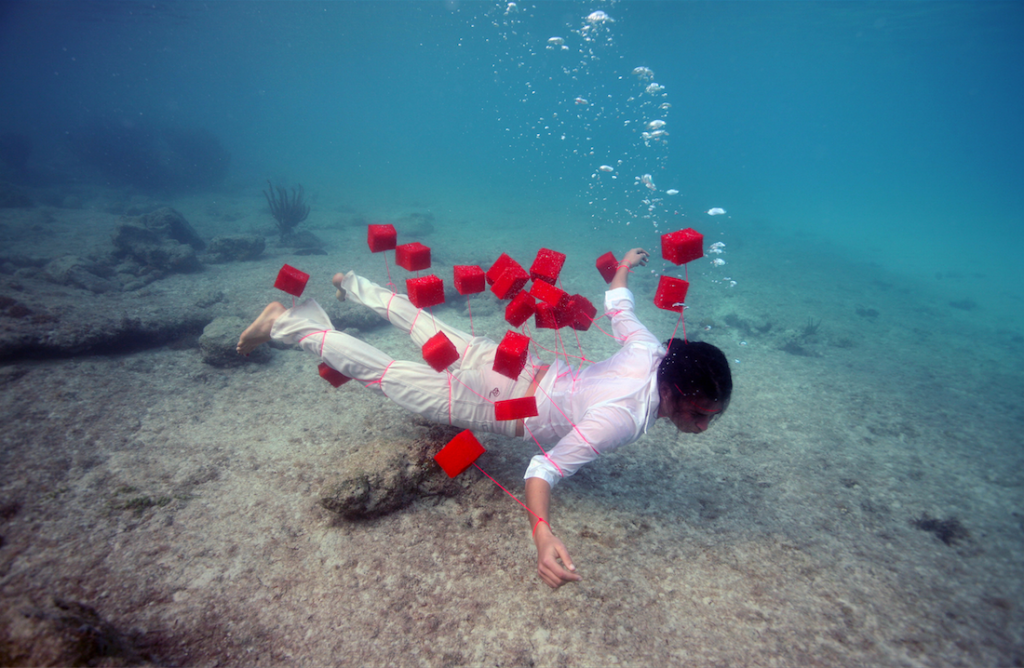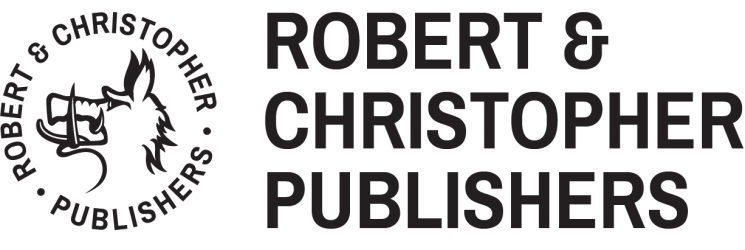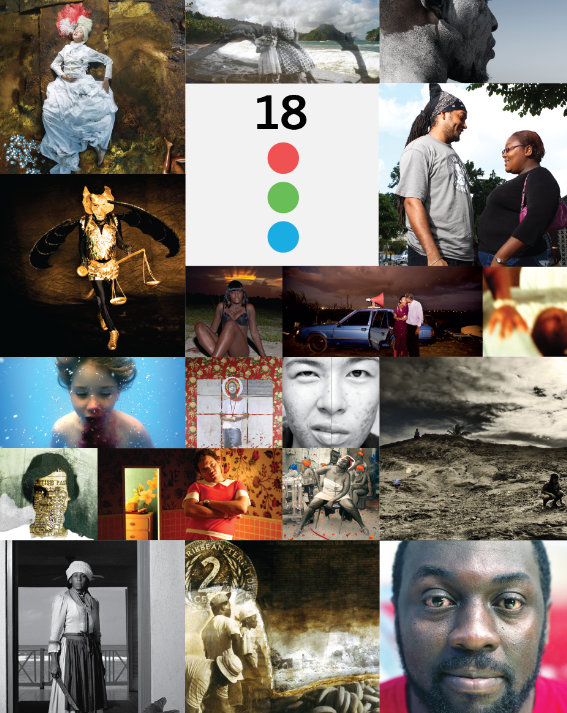
On April 24th, 2014, Robert & Christopher’s latest art book, See Me Here: A Survey of Contemporary Self-Portraits from the Caribbean was launched at Medulla Art Gallery in Trinidad, as part of the Bocas Lit Fest.
See Me Here brings together the work of 26 contemporary artists from around the English-speaking Caribbean and its Diaspora.
Our next launch is planned for June 26th at Fresh Milk in Barbados.
In Trinidad and Tobago, books are available at the Paperbased Bookstore in the Hotel Normandie.
Sheena Rose is our cover artist!
Meet the artists of See Me Here
Robert and Christopher teams up with Medulla to launch See Me Here
Meet the See Me Here artists and our new cover!

We are so excited to be able to share the front cover of our new title, See Me Here: A Survey of Contemporary Self-Portraits from the Caribbean with you! The cover features a piece by Barbadian artist, Sheena Rose, called Clown or What, from Rose’s “Sweet Gossip” series. Sheena is one of 25 artists from around the English-speaking Caribbean whose work will be featured in See Me Here.
The artists included in the book are:
Akuzuru
Ashraph
Ewan Atkinson
James Cooper
John Cox
Renee Cox
Annalee Davis
Susan Dayal
Laura Facey
Joscelyn Gardner
Lawrence Graham-Brown
Anna Ruth Henriques
Nadia Huggins
Michelle Isava
O’Neil Lawrence
Jaime Lee Loy
Che Lovelace
Joshua Lue Chee Kong
Olivia McGilchrist
Steve Ouditt
Sheena Rose
Irénée Shaw
Roberta Stoddart
Stacey Tyrell
Dave Williams
The essay, “Picturing Self”, was written by Marsha Pearce.
See Me Here will be launched in Trinidad and Tobago during the Bocas Lit Fest, April 24th at Medulla Art Gallery, Woodbrook.
See Me Here is published by Robert & Christopher Publishers, edited by Melanie Archer and Mariel Brown, and designed by Richard Mark Rawlins.
Our new book, See Me Here, is coming soon!

Robert & Christopher publishers is delighted to announce the upcoming release of our latest title, See Me Here: A Survey of Contemporary Self-Portraits from the Caribbean.
The The Trinidad and Tobago launch will take place in partnership with the Bocas Lit Fest and Medulla Art Gallery, April 24th, 2014.
In Jamaican patois, the expression, “See Me Here” (See Mi ‘Ere!) is an instruction used to call attention to the speaker – whether for his or her physical appearance, or to note the occurrence of a significant moment in that person’s life – an arrival, so to speak. In a similar way, the book, See Me Here: A Survey of Contemporary Self-Portraits from the Caribbean, calls attention to recent directions in self-portraiture throughout the region, by focusing on artists who frequently or significantly use their physical selves, or those to whom they are linked by blood or significant experience, as an avenue for exploration and expression. In so doing, the book asks: How do we really see ourselves? How accurate is the image we present? What formative roles do our cultures and upbringings play? And, what role does the Caribbean as a physical and mental space have in the creation and perception of our own personal, visual identities?
One of the most common understandings of the self-portrait is that it reveals something of an artist’s inner feelings or personality. While this is one focus of See Me Here, the book also examines how, by using their own likenesses, certain artists are speaking to potentially complex, multilayered matters – identity, history, race, gender, sexuality, politics – thus defining themselves within their given contexts and through vastly varied experiences.
Although See Me Here presents individually distinct projects, the works are inevitably interconnected through similar themes. By dealing with self as a starting and/or ending point, the book covers a broad range of media and representations that the artists here explore in order to question and articulate what defines them within a contemporary Caribbean existence.
Robert & Christopher co-curates major international exhibition!

PICTURES FROM PARADISE : A SURVEY OF CONTEMPORARY CARIBBEAN PHOTOGRAPHY
May 1 – May 25, 2014
Shipping Containers behind The Power Plant Contemporary Art Gallery
231 Queens Quay West, Toronto
Tuesday–Sunday 10–5pm, Thursday 10–8pm
TORONTO, March 5, 2014 – Pictures from Paradise: A Survey of Contemporary Caribbean Photography explores the complex social, racial, political, and physical relationships and landscapes that exist within the Caribbean. Based on the 2012 book of the same name by Robert & Christopher Publishers, the exhibition is structured by four photographic genres to examine the work of 18 artists: ‘Tableau Vivant’ depicts constructed scenarios, ‘Portraiture’ challenges our understanding of the emotive subject, ‘The Documentary Image’ celebrates the interrogative attitude of photographs, and ‘Transformed Media’ hails digital processes.
Reflecting how migration affects cultural development, Pictures from Paradise is specially presented within four adjoined shipping containers positioned alongside Lake Ontario. Tackling critical issues of race, class, gender, sexuality, nationality and identity, the exhibition exposes the region in contrast to the picture-perfect paradise of traditional depictions.
Pictures from Paradise, a primary exhibition in CONTACT 2014, is curated by Robert & Christopher editors Melanie Archer and Mariel Brown with Wedge director Kenneth Montague. Programming will include a panel discussion and exhibition tours. The exhibition is organized by Scotiabank CONTACT Photography Festival and Wedge Curatorial Projects and presented in partnership with Robert & Christopher Publishers and The Power Plant Contemporary Art Gallery.
Opening Reception
Saturday, May 3, 2014, 5:00pm – 7:00pm
Participating Artists
Ewan Atkinson, Marvin Bartley, Terry Boddie, Holly Bynoe, James Cooper, Renee Cox, Gerard Gaskin, Abigail Hadeed, Gerard Hanson, Nadia Huggins, Marlon James, Roshini Kempadoo, O’Neil Lawrence, Ebony G. Patterson, Radcliffe Roye, Alex Smailes, Stacey Tyrell and Rodell Warner
Presenting Partners
Scotiabank CONTACT Photography Festival is an annual event in May with well over 1500 Canadian and international artists and photographers exhibiting at more than 175 venues throughout the Greater Toronto Area. Founded as a not-for-profit organization in 1997 and now a charitable organization, the Festival is devoted to celebrating, and fostering the art and profession of photography, through a diverse range of programmes.
Wedge Curatorial Projects is a charitable organization with a mandate to increase public awareness and understanding of the arts with an emphasis on promoting African and diasporic communities. Founded by director Kenneth Montague in 1997, Wedge was conceived to be an experience where artists would be ‘wedged’ into the public consciousness through exhibitions, discussions, workshops, and community development projects. By exhibiting art and arranging programing events, Wedge Curatorial Projects promotes artists who explore diasporic culture with a strong focus on black identity and representation.
Robert & Christopher Publishers is a small and ambitious illustrated art book imprint based in Trinidad and Tobago. Our primary concern in our contemporary art series is to produce quality books that document and elucidate our Caribbean story as seen through the eyes of Caribbean artists. We aim to produce the highest quality of relevant books that will be accessible to a wide reading and creative audience, in Trinidad and Tobago, the Caribbean and internationally.
Image: James Cooper, Johana Foamz, 2008, digital photograph, Organized with Wedge Curatorial Projects, Robert & Christopher Publishers and presented with The Power Plant
Pictures from Paradise Reviewed in ARC Magazine!
Reviewed by Leanne Haynes for ARC Magazine; 23rd April 2013
This superb visual treat, with exceptional design was published by Robert and Christopher Publishers of Trinidad and Tobago in 2012, under the editorial guidance of Melanie Archer and Mariel Brown. Pictures from Paradise is the first edition in a planned series of works by the publishers and focuses specifically on the evolution of contemporary photography in the Anglophone Caribbean.
The collection contains an eclectic array of images, featuring names such as Marvin Bartley and O’Neil Lawrence of Jamaica, Rodell Warner and Abigail Hadeed of Trinidad and Tobago, and ARC Magazine’s very own Creative Director Nadia Huggins and Editor-in-Chief Holly Bynoe of St. Vincent and the Grenadines, to name but a few of the outstanding entries that make up Pictures from Paradise. The collection then consists of images from eighteen different artists, from seven different Caribbean countries. As such, the volume gives the viewer a range of perspectives on the region that go beyond the idyllic (and somewhat tired) representations of the Caribbean i.e. those that solely focus on that of the tourist view: the sea, the sand, and the palm trees. What Pictures from Paradise does so successfully is shatter that longstanding image of the region and present an alternative, one of real lives, real people, and real situations, in an ever changing landscape so fascinatingly complex, embellished with issues of race, history, and politics. As Editors Archer and Brown state in the foreword to the collection, ‘In recognising that the region is not the picture-perfect paradise of traditional depictions, these artists focus instead on what is not easily seen or that which is often ignored’ (4). Pictures from Paradise is therefore a platform, a visual staging of the alternative, an alternative seen by the photographer and in turn, us, the viewer.
Given all this, we might then question the title of the collection; in fact it was one of the first things that struck me about Pictures from Paradise. Indeed, in the introductory essay provided by Assistant Curator of the National Gallery of Jamaica, O’Neil Lawrence, and contributor to the volume, highlights the irony of the name, offering an explanation:
[…] the images reproduced in this book are not the constructed realities that have been perpetuated and exported with the goal of enticing the tourists to the shores of one of the countries that make up the Caribbean. Rather, they are images produced by the inhabitants of this constructed Paradise – not as invitations to indulge in the unreal but as statements about Caribbean life from within the experience (5).
Lawrence’s essay, ‘Beyond Constructed Realities’, is placed at the beginning of Pictures from Paradise and effectively provides the theoretical grounding for the format of the collection: offering the most amateur of photographers (or even non-photographers) the necessary knowledge to trace the development in the region’s photographic history and also recognise the main categories of images taken by Caribbean photographers, which are then consequently represented in the volume. These four sections are as follows: The Tableau Viviant, Portraiture, The Documentary Image and finally, Transformed Media and Lawrence’s text gives a detailed overview of each of these, mapping their origins and evolution. ‘Beyond Constructed Realities’ is a vital part of Pictures from Paradise, providing a necessary theoretical springboard to a predominantly visual collection. As such, it adds a narrative to the volume, allowing the reader to relate to the visual iconography of the proceeding images.
A particular strength of Pictures from Paradise is the amount of images by each photographer. The editors have resisted the urge to include as many photographers as possible and because of this the viewer is given a sense of each of the photographers’ own stories. Rather than presenting single images, the collection presents at least six images for most of the contributors. For example, the collection contains a series of underwater images by Bermuda-born James Cooper, in fact, it is his image Fishing Line #2 (2010) that provides the intriguing and equally inviting front cover. By including eight of Cooper’s underwater series, we can explore his varying use of colour and composition and as Lawrence states in the opening essay, the ‘enhanced and surreal nature’ of the images (8). This series, is precisely that, a series, and although each of Cooper’s images are singly embellished with meaning, they function as a whole, with interwoven narratives. Pictures from Paradise allows one to trace the experimentation of the each of the photographers’ work, which in turn adds to the panoramic depiction(s) of the Caribbean.
The photographs in Pictures from Paradise address a range of subjects including Renee Cox’s Redcoat (2004) and her contemporary representation of Nanny of the Maroons; Marvin Bartley’s photographic depictions of colonial exploitation in the Caribbean in Master and Slave (2011); Alex Smailes’ Haitian series, which documents what he refers to as ‘modern-day slave domestic labour’ and additionally, his Trinidadian shots, which place an emphasis on gang culture. Other forms include the Transformed Media work of Holly Bynoe, whose time-staking collecting of images results in a creative manipulation, which specifically interrogate themes of time and memory and Nadia Huggins’ use of iPhoneography (to use O’Neil Lawrence’s term), i.e. using iPhone applications to take images, conjure up narratives relevant to use all. This brief overview is illustrative of the sheer range in Pictures from Paradise, allowing one to map the varying landscape of photography in the region, woven together by a common thread: life in the Caribbean.
Picturing the Caribbean (review)
Reviewed by Shivanee Ramlochan for Caribbean Bookshelf, Caribbean Beat.
The traditional photo book is going through some changes. No longer content to reside stoutly on coffee tables, books on photography are being designed to reflect the new, sometimes startling ways in which we interface with mass media. They demand conversation, juggle with our expectations of what the photographic portfolio is “supposed” to resemble. Pictures from Paradise: A Survey of Contemporary Caribbean Photography (Robert and Christopher Publishers, 224 pp, ISBN 9789769534476), edited by Mariel Brown and Melanie Archer, is a convincing pioneer of this modernising, reshaping ethic. It highlights the work of eighteen Caribbean-born or -based artists, from the mixed media narratives of Barbadian Ewan Atkinson to the memory-infused collages of Nevisian Terry Boddie. In Pictures from Paradise, the syncretic face and body of a Caribbean nation emerges, irreconcilable as it is marvellous to gaze upon.
This review appeared in the March/ April 2013 issue of Caribbean Beat.
Place Your Orders!

As part of our distribution deal with D.A.P., Pictures from Paradise will be available on amazon.com from the end of March. It’s not to soon to start placing your advance orders! Click here for more information. Happy ordering!



